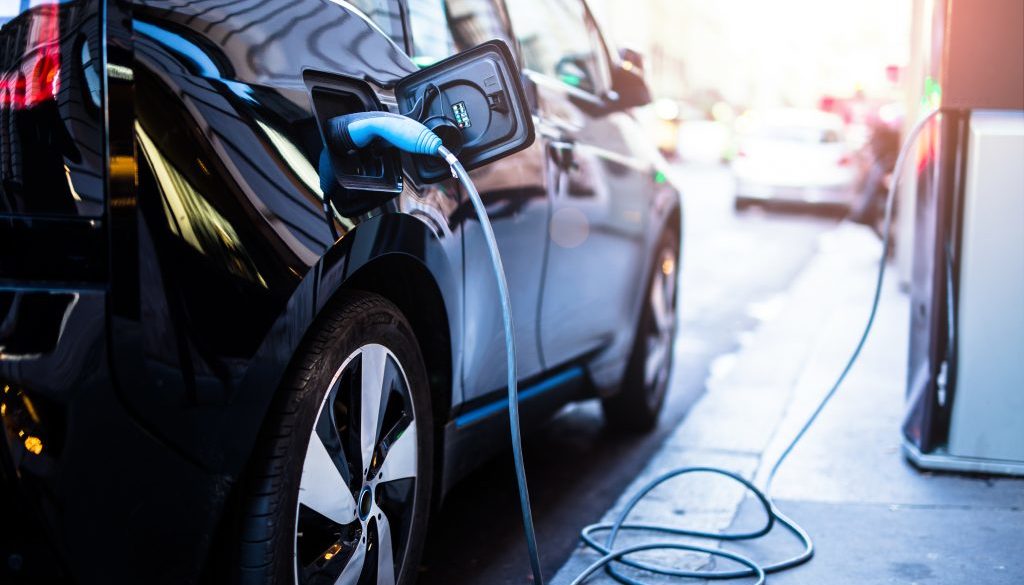Legal Lemons: Why Trump’s Clean Car Rollback Faces a Recall
By Ben Longstreth, Natural Resources Defense Council
The Trump administration’s assault on public health and the environment is steaming forward with a legally unsound proposal to gut fuel economy and carbon pollution standards for new cars and trucks. If the administration finalizes this rollback, we’ll take them to court and are confident we’ll prevail. As my colleague and vehicle expert Luke Tonachel explains in his blog, the proposed retreat threatens to increase pollution, raise consumer costs, and stifle the innovation needed to keep domestic manufacturers competitive abroad.
The proposal by the Environmental Protection Agency and the Transportation Department’s National Highway Traffic Safety Administration (NHTSA) makes no sense. Everyone benefits from ensuring that cars go farther on each gallon of gasoline and emit fewer greenhouse gases. Under our existing standards, vehicle manufacturers must increase the average fuel economy of their fleet to roughly 51 miles per gallon by 2025. EPA and NHTSA want to roll back the standards and freeze them at 2020 levels. Not content with a retreat at the federal level, the agencies also seek to limit California’s long-standing authority to set its own, tougher tailpipe standards.
Can EPA and NHTSA reverse course this way and threaten California’s authority? The short answer is no.
In the Clean Air Act of 1970, Congress gave the EPA the authority and responsibility to protect Americans from dangerous air pollutants emitted by cars and light trucks. The Supreme Court has held that the law covers all kinds of air pollutants, including carbon dioxide and other greenhouse gases. The administration doesn’t question EPA’s 2009 finding that carbon pollution threatens Americans’ health and welfare. Yet the proposed rollback would completely fail to carry out EPA’s legal obligation to protect Americans from this dangerous pollution. As Luke describes, EPA arbitrarily ignores numerous cost-effective technologies that automakers can deploy to reduce vehicle pollution. Our prior comments from 2017 and EPA’s own prior technical analysis in 2016 show that the standards should be strengthened, not weakened.
Likewise, Congress directed the Department of Transportation in the Energy Policy and Conservation Act of 1975 to set fuel economy standards that reflect the “maximum feasible average fuel economy level” that manufacturers can achieve. There can be little doubt that NHTSA’s proposal to flatline the standards after 2020 does not reflect the “maximum feasible” level required by law. Just like EPA, NHTSA has ignored feasible technologies that save customers money and are already being implemented in some models. In the comments we plan to file on the proposal, we will show how NHTSA has failed to properly evaluate the full potential for improving fuel economy.
We are confident that the courts won’t let Trump get away with do-nothing rules that ignore recent technology advances and fail to protect the public from dangerous pollution. The Clean Air Act, the Energy Policy and Conservation Act, and fundamental principles of administrative law require that EPA and NHTSA base their decisions on the scientific and technical evidence before them. Here, the evidence in favor of stronger standards, including the agencies’ own prior analysis, is overwhelming.
As my colleagues David Pettit and Irene Gutierrez have previously explained, EPA and NHTSA will also lose if they try to carry out their threat to take away California’s clean cars program. Since 1967, federal law has expressly allowed California to set its own tailpipe standards and allows other states with poor air quality to choose either the federal or California standards. California has set its own standards for decades and today twelve other states and the District of Columbia have chosen to follow California’s advanced clean car standards, with Colorado now seeking to join their ranks.
EPA has no basis to rescind this well-established authority. Nor does NHTSA have any basis to complain that California’s greenhouse gas pollution standards are incompatible with NHTSA’s fuel economy standards as the agency argues in the proposed rollback. The Supreme Court ruled in Massachusetts v. EPA in 2007 that both the Clean Air Act and Energy Policy and Conservation Act apply to new cars and that EPA’s duty to set emissions standards for greenhouse gases and NHTSA’s duty to set fuel economy standards “may overlap, but there is no reason to think the two agencies cannot both administer their obligations and yet avoid inconsistency.” The same is true for California’s clean car standards and NHTSA’s fuel economy standards. In fact, following Massachusetts, two district courts in Vermont and California rejected claims by auto dealers that California’s greenhouse gas standards were preempted by NHTSA’s authority to set fuel economy standards. In short, we’ve seen this movie before and the Trump administration’s sequel will end the same way – with decisions affirming California’s authority to set its own clean car standards.
Finally, it is important to emphasize the harm Trump’s headlong rush to roll back standards will cause. This effort is bound to create years of uncertainty for automakers and U.S. consumers alike. A final rule that weakens the 2022-2025 standards will be subject to litigation by numerous parties, including NRDC. Automakers need to plan their investments years in advance and crave regulatory certainty. The Trump administration is handing them years of uncertainty and litigation. This is bad for automakers, consumers, and the health of our planet. We would prefer a different path, but if the Administration finalizes this terrible proposal, we’ll have to see them in court.

